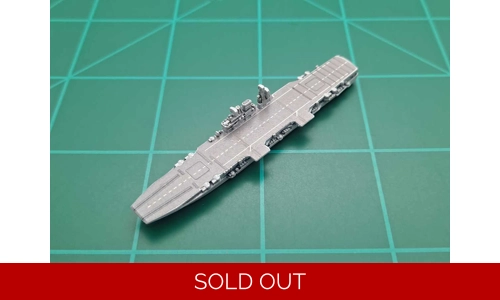
Malta Class Aircraft Carrier
Product Details
Malta Class Aircraft Carrier Summary
This is a 3D printed sculpts of the Malta class aircraft carriers by HBG.
The four ships of the Malta-class were ordered in 1943. Repeated changes for new tactical concepts and incorporating American experience in the Pacific War, caused delays and none were completed before the end of the war. All four ships were cancelled in 1945 before they were laid down.
In July 1942 the Royal Navy examined the fleet's requirements for the rest of the war and realized a major expansion of naval aviation was required for Pacific operations. Many factors combined to drive up the size of these new carriers, notably the increasing size and speed of aircraft and the desire to increase the numbers of aircraft aboard fleet carriers. Another important consideration was the change in carrier tactics from the earlier doctrine of more attacks with smaller numbers of aircraft to the use of large, single airstrikes.
A closed-hangar design with an armored flight deck and five propeller shafts was selected. Analysis of American operations in the Pacific had shown it was vital to fly off all of a carrier's aircraft in a single airstrike. That required a well-ventilated, open-hangar design, which would reduce the time required to launch the aircraft by allowing them to begin the typical 15-minute engine warm-up while still in the hangar. In May 1944, the decision was made to produce an open-hangar design with deck-edge lifts. Unusual for a British design, an unarmoured flight deck was agreed upon.
An initial design for a 900 ft long hull at the waterline was not approved. Concerns arose over the size might have problems manoeuvring in constricted harbors. Ultimately, revised versions on par with the size of the USN Midway class were not accepted by April 1945. Considering the end of the war was near by this point, the class was cancelled before any hulls were laid down.
Ships of Class:
- Africa
- Gibraltar
- Malta
- New Zealand
The Malta comes fully magnetized to hold two aircraft.


